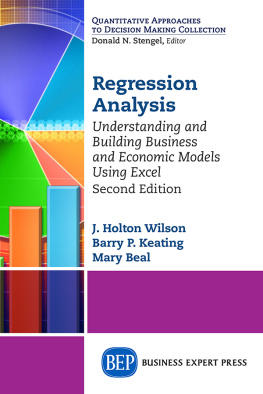Introduction
When a well-known international company in the mining business a few years ago announced that one thousand one hundred and fifty employees had been discharged worldwide because of decreasing demand, the company shares soared on the international stock markets. Financial journalists reported that the financial market jumped with joy and predicted a prosperous fortune for the company, at least within a short time frame, owing to lower operating costs. Shareholders were certainly among those who cheered at the prospect of promising dividends, as did other stakeholders, such as equipment suppliers to the company who would benefit by the prospect of increased sales as reduced labour costs would boost up the need for additional equipment and machinery.
A group with less reason for enthusiasm was probably those employees who were laid off and their families. The loss of jobs was certainly a setback also in those places where the company had offices or factories and where new job opportunities were scarce. Business performance is thus a relative concept because of different perspectives, and different stakeholders can be identified: Shareholders are happy when financial returns are satisfactory and owners are happy when their company expands and grows. Customers appreciate good supplier performance when the company delivers products and services at compatible price and quality levels.
Employees are happy when the company provides safe job opportunities and competitive benefits with career opportunities. Governments are happy about tax incomes from profitable companies and managers are happy when the business is performing well and results are improving. Researchers and consultants are happy when performance improvements can be related to research and consulting activities. Each of these stakeholder categories thus has its own views and criteria when judging a companys performance. There is also a wider aspect of business performance that goes beyond the firm itself and its closest stakeholders, referred to as Corporate Social Responsibility. CSR emphasises that companies should have responsibility not only for business development but also for the firm in its relation to environmental factors, to gender equality and to ethical and moral issues. Monitoring the companys performance from a CSR perspective requires a broader set of measures than what is provided through the accounting system. Ethical and moral aspects are generally not features of the average companys performance measures, but they belong to the CSR concept.
Mini-Encyclopaedia: Corporate Social Responsibility (CSR)
For a number of years, management theorists and corporate strategists have been addressing the question of what should be the companys role in society. While most now agree that its role extends beyond the purely economic dimension, there is much debate on the extent of this expanded social role and how social performance can be measured. Adding complexity to the discussion is the reality of global companies that operate in a number of different societies. Theories that attempt to define the companys responsibility to society are generally grouped together as theories of corporate social responsibility (CSR).
A strong strategic approach to CSR is found in the work of Carroll (1991), who has devised a model of CSR that takes into account economic, legal, ethical and philanthropic dimensions. The model places the economic obligations of the company at its base, recognizing that the business must be economically profitable in order to survive. Above economic activities are legal responsibilities. Legal obligations cover many areas, including employment law, environmental law and health and safety regulations. Of course, the law sets minimum standards, which may differ from country to country. A firm with a strong CSR policy will aim to go beyond minimum legal standards. Carrolls model sees this exceedance of minimal legal requirements as an aspect of ethical responsibility, along with respect for ethical norms in the society in which the firm operates. The last element is philanthropy, such as charitable giving, which, while desirable, is less important than the other threethe icing on the cake. Carroll stresses that the model does not posit an inherent conflict between making profits and being socially responsible: For the manager, all four dimensions of the firms responsibility should be central to corporate strategy (Morrison, 2006).
Corporate social responsibility has recently developed into a widespread and important concept that calls attention to the fact that small enterprises share responsibility with the rest of society for social fairness and human rights, similar to the recognition of shared responsibility for environmental concerns, which has nowadays turned into a business asset. Social entrepreneurship is developing in a similar way.
The concept of social entrepreneurship gained international recognition when the Nobel Peace Prize was awarded to the Grameen Bank and its founder, Muhammad Yunus, in 2006. The bank is a lender of small loans as start-up capital to poor individuals and communities in Bangladesh for entrepreneurial activities in the rural areas. The Grameen Bank started in 1976 as a social entrepreneurship with the objective to facilitate the capacity for poor villagers to invest in a cow or a hand loom and thereby generate an income. Preference was given to women as loan takers, and, of the total number of eight million loan takers, about ninety-seven per cent are women.
A variety of social entrepreneurship schemes has emerged in different countries since 1980; the concept was first coined in 1981 when Ashoka, a global association of the worlds leading social entrepreneurs with the aim of addressing the worlds most urgent social problems by using market driven business models, was founded.
Monitoring and Performance
Monitoring and performance are associated with assessment and evaluation and are two sides of the same coin: Monitoring is a process taking place while things happen; performance cannot be determined until things have happened and results are being evaluated. Monitoring is the supervision of an ongoing task to determine whether progress seems likely to meet the objectives that have been set in accordance with pre-formulated targets. Performance shows to what extent the task has been accomplished measured against the same pre-set target. What to be monitored, how to monitor and when to monitor therefore depends on the kind and nature of the task and the parameters that have been defined to characterise the task. Monitoring customer service can hardly be accomplished unless customer service has been defined and characterised with the help of suitable parameters that have been identified and constitute a model for customer service. In the same way, performance of customer service cannot be determined unless parameters and perspectives have been established and agreed upon as a standard.
While stakeholder perspectives determine what criteria are to be applied for selecting a monitoring model and performance references, the established standards are determined by the prevailing epistemological view (or Zeitgeist in German) that dominates for a time period by highlighting specific aspects of reality. The common designation for this Zeitgeist in social science is the paradigm concept, defined by Kuhn (1962) as a universally recognized scientific approach that for a period brings together a community of researchers by addressing problems and solutions with a joint attitude, such as what is to be observed and scrutinized, what kind of questions are supposed to be asked and probed for answers in relation to this subject, and how these questions are to be structured. Management and organisation theory refers to five paradigmatic periods in the last hundred years. In the following chapters, the five paradigms will be discussed in some detail. The present period is referred to as the current paradigm.















